| On the heels of the recent
UN Security Council Resolution, which pursued tough new sanctions
against the Democratic People’s Republic of Korea (DPRK) for
blasting a long-range missile and detonating the second atomic bomb,
North Korea has moved aggressively against the last remaining zone
of inter-Korean economic cooperation, the Kaesong Industrial Complex
(KIP).
On 11 June 2009, the North Korean news agency KCNA
announced the nullification of all contracts on rent, salaries and
taxes adopted for the industrial park in Kaesong. Pyongyang wanted
the minimum monthly wage raised four-fold (to $300 from $75) and demanded
an immediate lump-sum land lease payment of US$500 million. It asked
Seoul to empty the industrial estate unless the money was paid. This
notification came after the two Koreas were wrangling over the release
of a South Korean worker who was detained by the North Korean authorities
for alleged anti-DPRK statements and inciting a DPRK citizen to defect.
Even without salary increases, the 106 companies
that invested in Kaesong have been in economic trouble and have said
they are considering asking the ROK government for support. Now they
have started withholding wages to their DPRK staff in protest at the
North’s demand for increased pay and tax rises.
What lessons can be drawn from the recent rise and
fall of inter-Korean economic cooperation? Pyongyang blames the South's
‘extreme confrontation policy’ for destroying the foundation
of the industrial park, adding that the future of the complex is up
to the South. Restrictions imposed by the North on all jointly operated
Special Economic Zones will inevitably lead to substantial losses
for the South Korean government, which had guaranteed investors up
to 90 per cent of their capital in case of forced closure or military
conflict. North Korea will also lose a significant source of revenue,
but since both the Kaesong Industrial Park and the Mt Kumgang tourist
resort are physically on the North Korean territory, they will remain
the DPRK property, even if closed or abandoned by investors.
There are no figures indicating the extent to which
the South Korean side might have profited from these cooperation projects
in monetary terms. Seoul has always subsidised Hyundai Asan and the
companies investing in the KIP through direct and indirect channels,
and the system of these subsidies was not particularly transparent.
The South Korean government never wanted to tell taxpayers how much
money it had spent on aiding the inter-Korean projects in Kaesong
and Mt. Kumgang; moreover it must have had serious reservations about
the future of this investment.
During the decade of Sunshine Policy (1998–2008),
also known as the Policy of Peace and Prosperity, the Kaesong projects
were frequently criticised by hawks in Washington and Tokyo, who saw
them as yet another way to indirectly subsidise the North Korean regime.
Indeed, Pyongyang was making good money out of economic cooperation
in Kaesong, amounting to US$100 million a year.
So why did North Korea decide to close its economic
cooperation so resolutely? Its official explanation about Seoul’s
‘extreme confrontation policy’ must be a pretext. Anti-DPRK
propaganda can be disturbing and annoying, but it hardly constituted
a direct threat to the regime. After all, Pyongyang had not been influenced
by the much larger ROK propaganda efforts prior to 1998.
The real reason could be the Kaesong project itself.
It created a stage where large numbers of North and South Koreans
worked together for since the division of the country 60 years ago.
This project provided a rare opportunity for unauthorised exchanges.
The North Koreans not only learned modern technical skills, they also
had a chance to see that their southern compatriots do not look or
behave like they are normally portrayed by the DPRK propaganda.
|

Cautious political discussions cannot be ruled out,
which in the long run could have a great impact on the internal situation
of North Korea.
Anticipating this detrimental development, the North
started cooperation with the South on the precondition of switching
workers once a year, until realising this was impossible for technical
reasons. Inevitably rumours about life in South Korea started circulating
among KIP workers and their families. Illusions about the South became
so uncontrollable among the people that the authorities could not
bear this situation any longer. From Pyongyang’s point of view,
each worker in Mt Kumgang and Kaesong was like a poster advertising
capitalism that was most damaging to the socialist system.
At least 20 affiliates within the Kaesong zone of
cooperation came under questioning for speaking highly of South Korea
and capitalism. In 2007, there was a thorough cadre reshuffling in
the Party to stop people talking about Kaesong or Mt Kumgang. North
Korea also purged key officials who had pushed for reconciliation
with South Korea.
All this must have been a crucial consideration for
Pyongyang, as the survival of the North greatly depends on maintaining
the myths about the ‘poor and desperate’ South, which
starves under the yoke of American imperialism. In recent years, the
spread of smuggled South Korean DVDs and first-hand communication
with southerners in Special Economic Zones has made this propaganda
image unsustainable.
In this context, the Kaesong and Mt Kumgang projects
were a dangerous gamble from the outset. For 10 years the top bureaucracy
tolerated cooperation with the South because the monetary rewards
were handsome and the political risks manageable. Perhaps, when the
principal decision was made in 1989 for Mt Kumgang, and in 2002 for
Kaesong, they also wanted to check whether they could contain the
spread of dangerous information. At that time North Korea was going
through a period of unprecedented political relaxation and experimentation
with reforms. However, this ended with the beginning of nuclear crisis
in October 2002.
Since 2003, North Korean leaders have worked hard
to turn back the clock. All news coming recently out of North Korea
has been about greater control and tougher restrictions. Busy markets
are a nightmare for Pyongyang retrogrades. The DPRK government is
now confiscating land from individual tillers, Japanese-made buses
and trucks are taken from small businesses and the sale of many consumer
goods at the markets is restricted. The Public Distribution System,
which dominated the country's economic life before 1996, has also
been reintroduced.
In the last couple of years several instances of
public unrest have made the North Korean government nervous, but it
managed to retain control and prevent the mutiny from spreading. The
November 2008 Cabinet Decision No. 61 stipulated that in 2009 all
markets across the country should work only three days per month,
similar to how they worked in medieval Korea. Currently, there are
reports about government plans to close down the Pyongsong Market,
the largest wholesale market in the country.
|
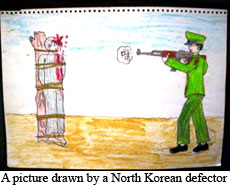
Ruediger Frank and Sabine Burghart, in their report,
‘Inter-Korean Cooperation 2000-2008’, compare the inter-Korean
cooperation with the East European experience. When analysing South
Korea’s Sunshine Policy and describing its dangers for the North
Korean regime, they remind us that ‘everyone who has lived under
socialism in Europe can confirm how this slow ideological poison spreads
like cancer, how these cells grow and how they finally unfold their
destructive, lethal power, hollowing out the system from within’.
In this connection, Frank and Burghart cite Kim Jong-Il himself, who
is recorded as saying in 1995 that ‘the most serious lesson
of the collapse of socialism in several countries is that the corruption
of socialism begins with ideological corruption.’
North Korea cannot afford to emulate the success
of China in transforming its economy as this would require a considerable
relaxation of domestic police control. China has survived such a relaxation,
but there is a great difference between North Korea and China. The
PRC leaders did not have to deal with the existence of a rich and
powerful ‘other’, where people speak the same language
but enjoy significantly higher level of freedom and prosperity. The
DPRK leaders believe that political unrest is unavoidable if their
citizens learn how prosperous South Korea really is.
Over the past few years all this has made Kaesong and Mt Kumgang something
of an anachronism. These two projects, which could function only with
a greater level of openness and transparency than in the rest of North
Korea, became too dangerous for Pyongyang to be tolerated and were
put under direct control of the People’s Army. The era of relaxation
and experimentation, which prompted the beginning of inter-Korean
cooperation, is well and truly over. Nowadays North Korea is heading
for a major retreat, back to military communism. Only those elements
of market economy necessary to keep the country afloat are being preserved.
It already looks as if the government has turned the clock back, restoring
the system that existed before the 1990s.
Conservatives in Seoul might hope that this decision
will deprive the North Korean regime of revenue and bring its end
closer. But the truth is that the regime can survive much longer in
isolation because poor and weak people do not have the energy or weapons
to rebel, particularly when they have little knowledge and understanding
of how different their life could have been. Therefore, by closing
the borders and shutting the zones of inter-Korean cooperation, the
North Korean elite is buying extra time to stay in power at the expense
of the common people’s suffering.
The complexity of regional politics and the current
state of global economy has also contributed to the early demise of
inter-Korean economic experiment. Nevertheless, the last 10 years
of the Sunshine Policy did make a difference and changed the Korean
people’s perceptions of one another, making a new attempt at
cooperation possible.
|







 How did the idea of a Centre for Dialogue come about?
How did the idea of a Centre for Dialogue come about? 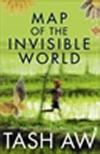 Map
of the Invisible World
Map
of the Invisible World 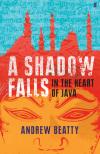 Shadow
Falls. In the Heart of Java
Shadow
Falls. In the Heart of Java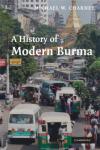 A
History of Modern Burma
A
History of Modern Burma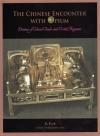 The
Chinese Encounter with Opium. Dreams of Colored Clouds and Orchid
Fragrance
The
Chinese Encounter with Opium. Dreams of Colored Clouds and Orchid
Fragrance 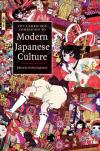 The
Cambridge Companion to Modern Japanese Culture
The
Cambridge Companion to Modern Japanese Culture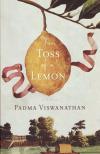 The
Toss of a Lemon
The
Toss of a Lemon